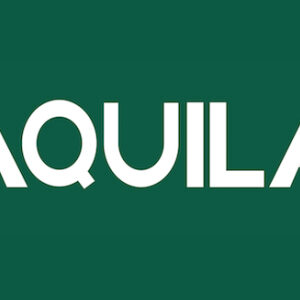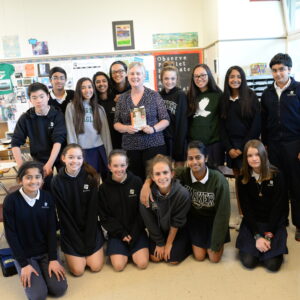This article originally appeared in the winter 2012 Harker Quarterly.
After finishing the Radiator Springs Racers ride at Disneyland’s Cars Land (a fabulous attraction, by the way, and a great movie, too), my family and I stopped to glance at the obligatory snapshot of our astonished faces taken while on the ride. I noticed that instead of buying the photo many patrons just snapped a picture of the picture with their camera phones. I questioned why anyone would buy the actual picture when they can “take” the picture in this fashion.
Then I noticed that indeed patrons were lining up to buy the actual photo. Why? Because it is a great souvenir from Cars Land. It comes with the frame and official logo. It is bigger. And it is something you can touch, drop on your toes, hang on your children’s bedroom walls, or look at without turning on a power button. Atoms still matter.
I was recently talking with a parent who creates a photo book on her children’s birthdays, a real one you can leaf through, of their previous year. She said that if she didn’t do this, the hundreds of photos she had taken over the previous year would remain in digital form, a collection of ones and zeros in some cloud, never to be seen. Atoms still matter.
While a senior was interviewing me for the student newspaper I asked her how she and her friends read. She said that she and most of her friends still prefer to study with books made from wood pulp. “ Why,” I asked? “I don’t know,” she said. “We just do. We can take notes more easily.” I was stunned. Atoms still matter.
Why do music lovers still collect vinyl? Why do shoppers check out an item in a store before buying it online? Why does The Economist, in its October 2012 special report on the relationship between geography and technology, argue that location, real dirt that you can stomp on, plays a huge role in the proliferation of technology? Because atoms still matter.
Readers who have endured the essay this far may have noticed a pun. Atoms are matter. And as philosopher Alan Watts points out, matter is derived from the same root as the word mother. It also relates to measure and maya, which means illusion. The universe is mother to all things. Measuring those things, however useful, is illusory. You cannot touch the equator. It is not made of atoms.
How does this matter to education? Two ways. One, education is largely learning about a vast set of abstractions. (Let’s not forget that the alphabet is a form of digital technology.) And two, the digital transmission of those abstractions for almost no cost is disrupting traditional schooling.
Those abstractions we learn in school relate to the real world. We learn about a real person who died in the early 19th century named Napoleon and we learn how to construct real bridges, for example. But we can forget that the world of abstractions that we study in school – by definition – is not synonymous with the world of atoms. As is commonly said, we mistake the menu for the dinner.
We can forget how powerful abstractions are. For instance, the world has enough wealth for everyone. But when the abstractions we have created that stand for wealth, what Niall Ferguson calls “Planet Finance,” collapse, the real world of atoms is sent into a tailspin of panic and destruction. Real education, so long as it claims to educate the leaders of tomorrow, has to be grounded in the real world. Atoms still matter.
The digital transmission of the abstractions we call education will tear through traditional education like iTunes did the record industry. But live interaction with a caring teacher will always be optimal. Why? Because we are human, at least for now. Ray Kurzweil talks about the coming marriage of technology and biology in “The Singularity is Near,” but for now, our 5- and 13- and 17-year-olds are fully human and it takes a village to raise them.
In fact, the first point is dependent upon the second. How can children remain grounded in the world of atoms if they aren’t taught about the world surrounded by it? How can they learn to care about humans if they aren’t taught by and around them? Atoms still matter.
In closing, we cannot escape the world of atoms, even if we try. In fact, the digital world is based on a system of ones and zeros – on and off – that is the very fabric of our nervous system and embedded in the rhythms of nature. Leibniz based his discovery of binary math on the Yin and Yang principles he discovered in “The Book of Changes.”
So when we whirl around the world digitally we are extending our nervous system across vast distances. Or when we ride an attraction like Radiator Springs Racers we trust that the engineers, with their abstract systems of ones and zeros, held the proper respect for atoms in their minds while building the thrills of tomorrow.












